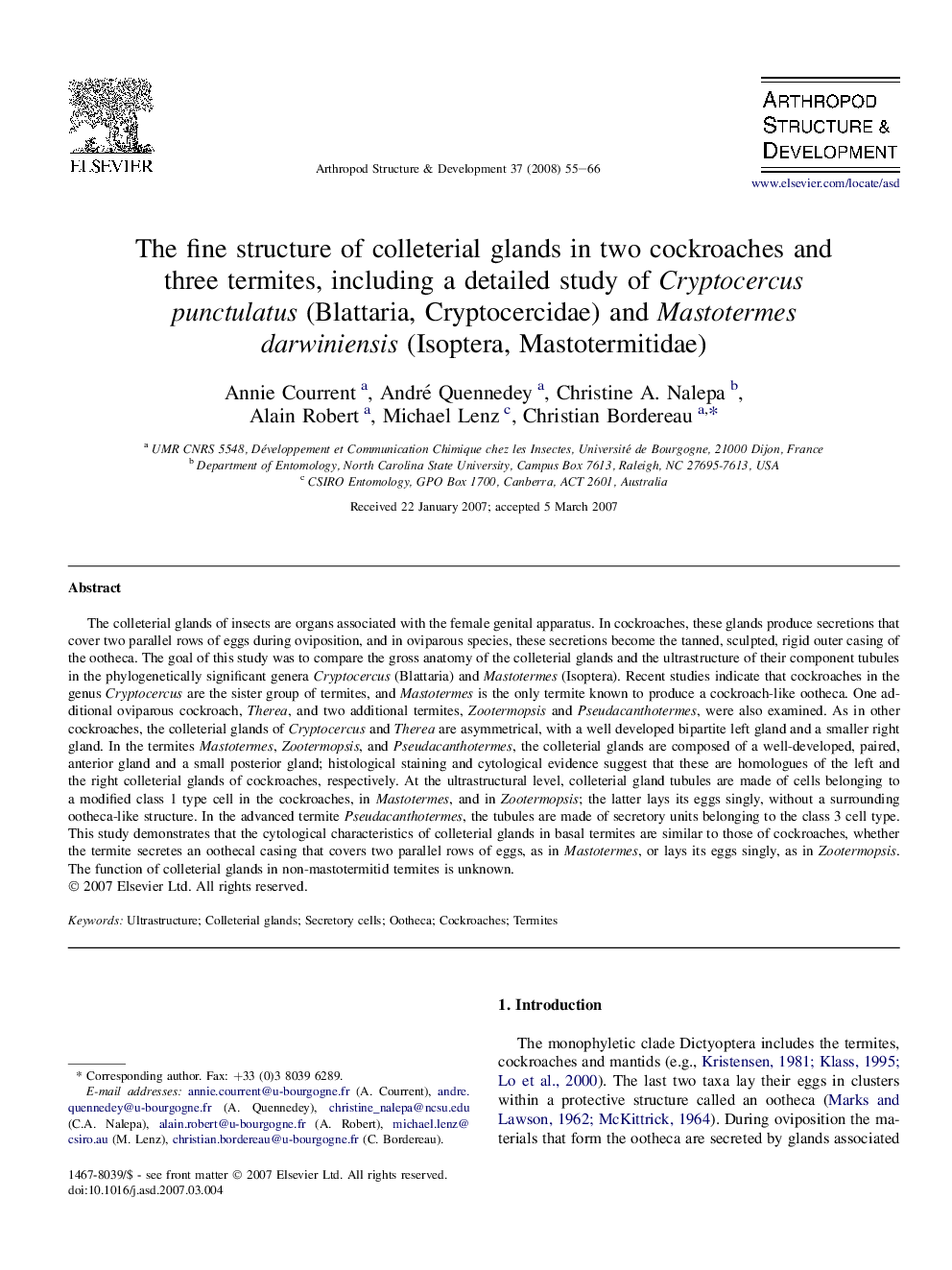| Article ID | Journal | Published Year | Pages | File Type |
|---|---|---|---|---|
| 2778978 | Arthropod Structure & Development | 2008 | 12 Pages |
The colleterial glands of insects are organs associated with the female genital apparatus. In cockroaches, these glands produce secretions that cover two parallel rows of eggs during oviposition, and in oviparous species, these secretions become the tanned, sculpted, rigid outer casing of the ootheca. The goal of this study was to compare the gross anatomy of the colleterial glands and the ultrastructure of their component tubules in the phylogenetically significant genera Cryptocercus (Blattaria) and Mastotermes (Isoptera). Recent studies indicate that cockroaches in the genus Cryptocercus are the sister group of termites, and Mastotermes is the only termite known to produce a cockroach-like ootheca. One additional oviparous cockroach, Therea, and two additional termites, Zootermopsis and Pseudacanthotermes, were also examined. As in other cockroaches, the colleterial glands of Cryptocercus and Therea are asymmetrical, with a well developed bipartite left gland and a smaller right gland. In the termites Mastotermes, Zootermopsis, and Pseudacanthotermes, the colleterial glands are composed of a well-developed, paired, anterior gland and a small posterior gland; histological staining and cytological evidence suggest that these are homologues of the left and the right colleterial glands of cockroaches, respectively. At the ultrastructural level, colleterial gland tubules are made of cells belonging to a modified class 1 type cell in the cockroaches, in Mastotermes, and in Zootermopsis; the latter lays its eggs singly, without a surrounding ootheca-like structure. In the advanced termite Pseudacanthotermes, the tubules are made of secretory units belonging to the class 3 cell type. This study demonstrates that the cytological characteristics of colleterial glands in basal termites are similar to those of cockroaches, whether the termite secretes an oothecal casing that covers two parallel rows of eggs, as in Mastotermes, or lays its eggs singly, as in Zootermopsis. The function of colleterial glands in non-mastotermitid termites is unknown.
